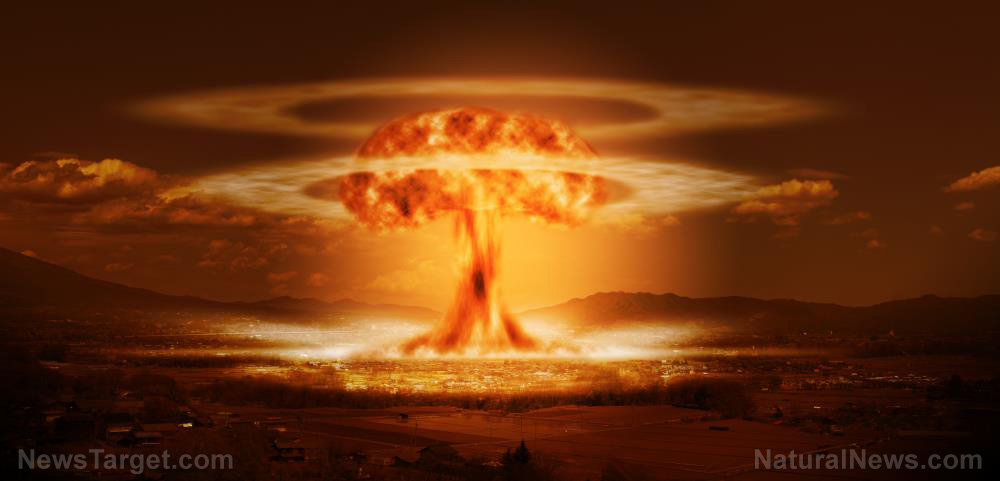
These crucial skills can help address most of the damage done to an individual's physical and mental health during an emergency. They may not prevent disasters from happening, but knowing what to do when something happens to you or your loved ones can help minimize serious injuries and fatalities. (h/t ThePreppingGuide.com)
3 first aid skills that can save a life
Treating blood loss is a crucial first aid skill because it can result in death. While there are various kinds of emergency first aid treatments for blood loss, you must focus on stopping the bleeding immediately and sterilizing the infected area.
Wash your hands thoroughly and put on gloves then ask the patient to lie on their back (unless the wound is located on their back). This will elevate blood flow.
You can now start cleaning the wound. Remove all the debris, dirt, and dry blood from the area, but do not touch any large objects penetrating the skin.
If you think these instructions are hard to remember, think of the acronym RICE:
- Rest
- Ice
- Compression
- Elevation
RICE will also remind you to apply pressure on a wound with a clean cloth for 20 minutes. Don't stop to check if the bleeding has slowed down or stopped.
If the wound is still bleeding, apply more pressure to the artery itself. If the wound is on the arms, aim for the pressure points just above the elbow region and below the armpits. The pressure points of the legs are directly behind the knee.
Once the bleeding has stopped, continue to apply pressure on the wound until it’s wrapped up. Check if the patient has other injuries that need tending to. (Related: First aid basics to teach your kids.)
Aside from injuries, disasters can also affect the mental health of survivors. These issues are often caused by anxiety, stress, and trauma that affect people who have lived through natural disasters.
While this can take some training, being able to set a victim's mind at ease with psychological first aid is an important skill to have. Disasters can have traumatic impacts on survivors, and noticing these signs can help you keep an eye on the mental health of certain individuals.
After any disaster, the most common reaction is a combination of shock and denial. This is common in disasters that hit entire communities, and the aftermath of these events can be very difficult for some survivors.
Shock usually has a lasting effect on people once they realize that they've lost their material possessions. Witnesses and first responders often have the same symptoms, and shock can cause anxiety, depression, post-traumatic stress disorder (PTSD), and other psychological health conditions.
It might seem overwhelming, but sometimes, just having someone to talk to can be a great help.
Drowning is the third major cause of death from unintentional injury worldwide. According to the Centers for Disease Control and Prevention (CDC), drowning accounts for at least seven percent of all injury-related deaths.
If there aren't any emergency responders, take emergency first aid action. Watch out for visual cues, such as flailing arms and a submerging head. A drowning person won't always have enough energy or oxygen to yell for help.
If you're trying to save someone from drowning, keep your distance. A person who's panicking can be strong enough to drag you down. Stay calm and pull away from the victim by submerging yourself. This will help the victim realize that you're there to help and they will release you. If the victim is unconscious, check their vital signs then perform emergency first aid CPR.
Emergencies can make anyone panic, but if you're ready, you can help save lives. Familiarize yourself with the three skills above so you can help protect your loved ones.
Don't wait until SHTF before you start making the necessary preparations because by then, it will probably be too late.
Fast facts on PTSD
- It can take years before a person experiences the signs of PTSD – It's difficult to diagnose PTSD, and diagnosis requires that a person experiences PTSD symptoms for at least one month. Symptoms may include anxiety, depression, and flashbacks.
- PTSD symptoms can be subtle – Even sufferers have a hard time recognizing their symptoms. Sometimes, PTSD symptoms get mistaken for depression, resulting in misdiagnosis.
- Therapy can be an effective treatment for PTSD – Medication isn't always the answer, and sometimes, consulting a professional can help an individual manage their PTSD symptoms.
- Exercise can help manage PTSD – Exercise can help individuals manage various mental health disorders such as stress and depression. This also applies to people with PTSD.
You can read more articles about other emergency skills that you may need when SHTF at Preparedness.news.
Sources include:
Please contact us for more information.























